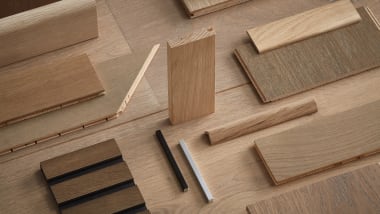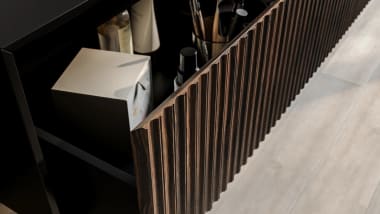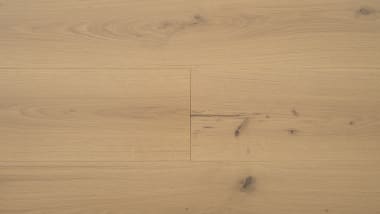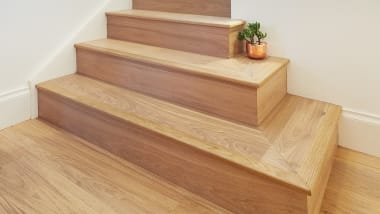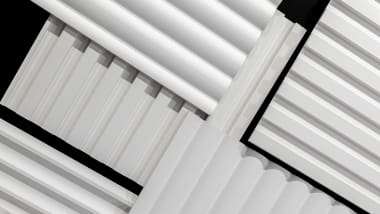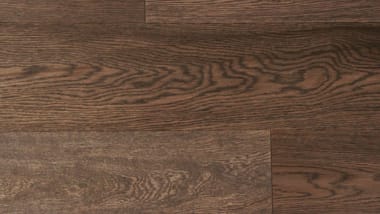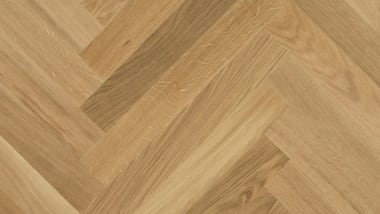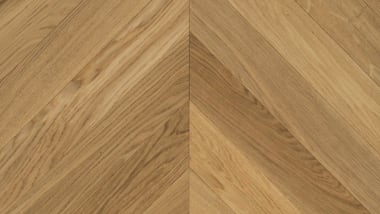Engineered Timber Flooring vs. Hybrid Timber Flooring
10 Oct 2022
When it’s time to renovate or build your home, choosing the right flooring is one of the most important decisions you’ll make. With so many options available, it can be challenging to determine which type best suits your needs. Two of the most popular choices today are engineered timber flooring and hybrid flooring. But what exactly are they, and how do they compare?
In this guide, we’ll break down the key differences between these flooring types, helping you decide which one is the best fit for your space. Whether you're wondering "what is hybrid flooring?" or trying to compare "engineered flooring vs. hybrid", we've got you covered.
What is Engineered Timber Flooring?
Engineered timber is a type of flooring that is a combination of different layers of timber. These layers are perpendicular to each other so that they are more stable than a solid plank of wood. This means that they are less susceptible to climate changes that can cause cupping, warping or bowing over time. Engineered timber can be made from a variety of real wood such as, oak, maple, walnut, Australian timbers such as spotted gum or Blackbutt, or other species, set on top of multiple layers of wooden material. Engineered timber is a popular option for many people looking to use real wood in their home but are after a more sustainable and structurally sound solution.
What is Hybrid Flooring?
Hybrid flooring involves a mixture of multiple materials, such as laminate and vinyl. The floors are designed and built to look similar to wood flooring but are not made with real wood.
At Havwoods, we choose not to stock hybrid timber flooring. Instead, we offer a carefully curated range of engineered timber flooring and interior timber solutions to suit a variety of budgets - without compromising on quality or design.
What are the Pros and Cons of Engineered Timber Flooring
Pro: Engineered Timber Flooring is Made From Real Wood
One of the key benefits of engineered timber flooring, is that it is made from real wood. This means that they provide your home with the look of a solid timber plank without the issue of it not being stable in fluctuating climates (engineered is less susceptible to cupping, bowing and warping).
Con: Not As Water-Resistant As Hybrid
Whilst your engineered flooring can take a little water, to keep your floors in the best condition and to last as long as possible you do not want to leave water on them for long periods of time.

Image: Havwoods' engineered flooring profile showing the high quality various timbers used to manufacture it and the top layer which can be sanded.

Image: Apartment featuring flooring from Havwoods' V-Collection.
Pro: It Can Be a Cost-Effective Type of Flooring
Engineered timber flooring is available at a range of price points and given it is pre finished and stained, there are less post installation costs. The click system or tongue and groove system allows for quick and easy install leading to lower costs versus some other flooring alternatives.
At Havwoods, prices range from H Collection and V Collection as some more affordable options, through to custom products and timbers such as the Luxe Collection and Venture Plank. Request a priced version of our Wood Book here.
Con: The Floors May Scratch Easier Than Hybrid
Since engineered flooring has a top layer made from real wood, engineered flooring has the same drawbacks as solid wood flooring and is therefore more likely to scratch.
Keep this in mind if you have large pets or children, or if you're installing engineered timber in a high-traffic area.
Pro: They Can Be Repaired and Refurbished
Whilst engineered timber floor boards may be more susceptible to scratches than hybrid flooring, due to them being made from real timber, they can be repaired in many instances.
Engineered timber flooring can be sanded back, just like solid timber floors allowing for the repair or refurbishment.
Some finishes of engineered timber boards, such as a UV oil finish, can also be spot repaired.
Con: Engineered Timber Flooring May Require More Maintenance VS Hybrid Flooring
Whilst many people enjoy the look of real timber, even as it naturally wears, if you prefer the look and feel of those new freshly laid boards, a little more effort and maintenance is required vs the hybrid flooring counterpart.
Special timber appropriate products need to be used for cleaning and regular sweeping and cleaning is recommended to keep dirt, sand and other elements from damaging the floors. More information on how to maintain engineered timber floors can be found here.

Image: Havwoods' engineered timber floor can be used in high traffic areas due to general wear adding to the character and ability to refurbish if required. Pictured here, the Roundhouse Restaurant at the Crystalbrook Kingsley Hotel.

Image: Eco friendly project featuring Lucerne from Havwoods third party sustainably certified range.
Pro: Engineered Wood Is Eco-Friendly
Engineered timber is an excellent option if green-friendliness is a priority for you. It's more sustainable than full timber flooring since you're using fewer trees and isn’t made using plastic and laminates such as hybrid flooring.
Many Havwoods engineered floors are also third-party sustainably certified providing the next level of comfort in knowing they are eco and socially sustainable.
You'll appreciate that you're protecting the environment, while still improving your home, a single floor plank at a time.
What Are The Pros and Cons of Hybrid Flooring
There are some downsides and benefits of hybrid flooring to consider when selecting the flooring for your space and requirements:
Pro: Hybrid Is More Water-Resistant
Moisture isn't a problem when you're dealing with hybrid floors. They can be waterproof, which makes them one of the most stable options on the market.
Con: They're Susceptible To Discolouration
With that said, the floors are susceptible to different forms of discolouration. While many of these floors come equipped with ultraviolet (UV) protective coating, it's not a form of protection that you can count on indefinitely.
This means that age, constant use, and general wear and tear will all take their toll sooner or later.
Pro: You Get Plenty of Versatile Options
Since hybrid floors are made from several different materials, you can also count on many colour options. Examples of hybrid flooring colour options that you can explore include maple, slate grey, taupe, and reddish tones.
This flooring material also allows you to choose patterns like herringbone, natural, diagonal, and those that mimic traditional wood flooring.
Con: A Timber Look Hybrid Floor Can Look Fake
A downside of wood look hybrid floors is that the printed timber image is usually quite obviously fake. Whilst this may not be an issue for some clients, for others it can cause issues if they want to achieve a quality finish for their project.
The other consideration when considering hybrid floors is that given it is a printed timber photo or pattern, this is replicated throughout the pack, so if not installed carefully, you will notice the print repeated throughout your floors, clearly showing the “fakeness” of this product.

Image: An example of the repetition of a manufactured pattern seen in a Hybrid floor.

Image: Hybrid floor profile showing various mix of plastic based materials.
Pro: Hybrid Floors Are Affordable
Hybrid floors are also cost-effective. It's easy to add these floors to your budget and get an installation from start to finish.
These floors are also easy to customize, and you can get a good rate on the work even when building flooring from scratch.
Con: These Floors Can't Be Re-Sanded
Sanding your engineered timber floors is always an option when you need to refurbish or repair them. Unfortunately, this isn't possible with hybrid flooring.
You can't add a fresh coat or sand these floors, so you'll have to use other methods for repairing the floors such as replacing panels.
Deciding for Your Project: Engineered Timber Flooring Or Hybrid?
Now that you’re familiar with the differences between engineered timber and hybrid flooring - including their respective benefits and limitations - it’s time to think about your space and what best suits your needs.
Consider the specific requirements of your project.
Both flooring types come pre-finished and coated in a controlled factory environment, ensuring consistency and ease of installation. However, there are a few key things to think about beyond just the appearance.
For example, hybrid flooring, while highly durable and water-resistant, can be noisier underfoot due to its composite structure, which often includes laminate materials. If you’re installing flooring in a high-traffic area or a multi-level home, think about how sensitive you are to noise and whether this could impact your decision.
Engineered timber, on the other hand, offers a premium look and feel, making it a popular choice for adding warmth and style. It is a high-quality solution that balances performance, aesthetic, and longevity.
Ultimately, weigh up factors like acoustics, foot traffic, installation needs, and long-term value to find the best flooring for your project.
Thinking Long-Term: Maintenance and Repair Considerations
Maintenance is a key factor when choosing between engineered timber flooring and hybrid flooring. While both options are designed for durability, their upkeep requirements can vary. Understanding these differences will help you make the right choice for your lifestyle and the demands of your space.
Both flooring types benefit from regular cleaning: sweeping or vacuuming to remove dirt and debris, and mopping with a damp (not wet) mop to keep surfaces looking their best. Promptly treating spills and stains will also help preserve the finish over time.
However, when it comes to wear and tear, such as scratches, dents, or surface damage. Depending on the finish used and thickness of the top timber wood layer, engineered flooring can often be spot-repaired by slightly sanding and refinishing to restore its appearance. Hybrid flooring, on the other hand, typically cannot be refinished, so any damaged planks may need to be replaced entirely.
Be sure to ask about product warranties, maintenance recommendations, repair options, and the expected lifespan of your chosen flooring. Some ranges come with long-term guarantees and care guides to help protect your investment.
Ultimately, the best flooring for your space is one that not only looks great but fits seamlessly into your daily routine. Choose a solution that matches your expectations for upkeep and longevity.
Installation Matters: What to Know Before You Begin
When selecting flooring for your project, it’s essential to consider installation requirements. While both engineered timber flooring and hybrid flooring are typically pre-finished - meaning they don’t require sanding or coating on-site - the installation methods and support available can vary.
At Havwoods, we specialise in engineered timber flooring, offering a wide range of products that feature a precision-milled tongue-and-groove profile. These are designed for professional installation to ensure a secure, long-lasting result. Tongue-and-groove boards typically require a direct stick install method using an adhesive, depending on the subfloor and application.
If managing the installation yourself feels overwhelming, we can help point you in the right direction. Havwoods are happy to recommend trusted professionals from our network of preferred installers who have experience working with our products.
Ultimately, the right flooring choice for your project is one that aligns with your design goals, performance expectations, and installation requirements.
If you're still deciding, we encourage you to book a showroom appointment to see our engineered timber products in person, or order up to 5 a free samples online to experience the look and feel in your own space.
Final Thoughts: Making the Right Choice for Your Space
Choosing between different flooring types can feel overwhelming, but understanding the key differences and how they align with your project needs can make all the difference. Engineered timber flooring offers a timeless aesthetic, natural warmth, and long-term performance, making it a smart investment for a wide range of residential and commercial spaces.
From considering the unique requirements of your space to thinking about maintenance and installation, each step brings you closer to a floor you’ll love for years to come.
Ready to take the next step?
Explore Havwoods’ expertly crafted collections of engineered timber flooring and discover a product that brings your vision to life. Visit a showroom near you or order up to 5 order a free samples online to get started.











